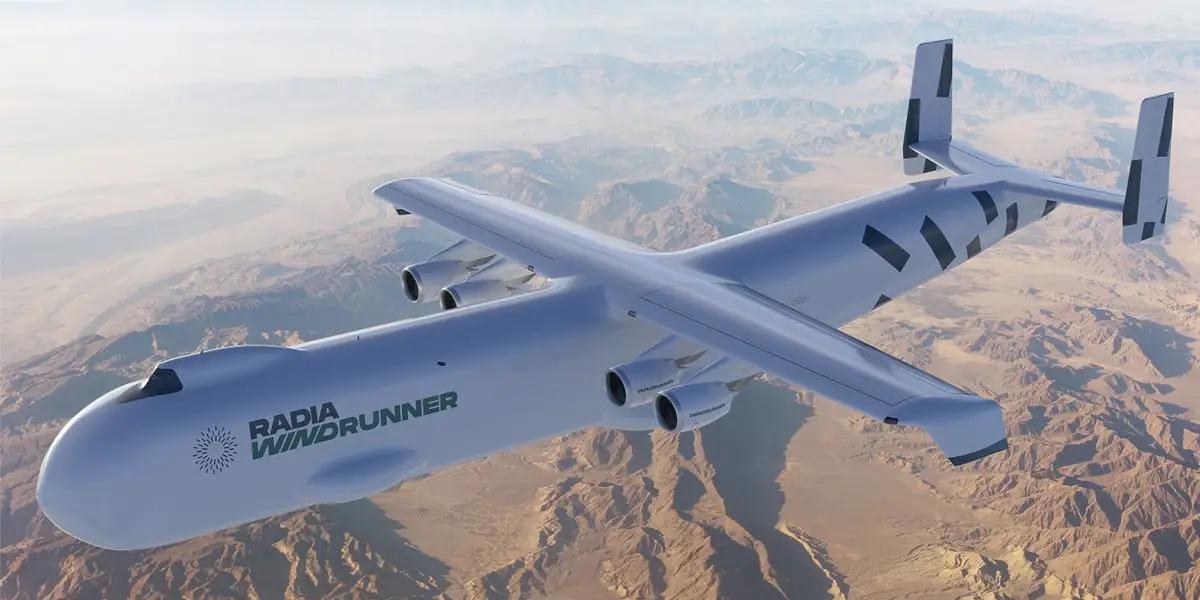
A late-stage startup building the world’s largest plane — originally for moving giant wind turbine blades — now wants its aircraft to ferry Chinooks and fighter jets for the US military.
The Windrunner is meant to offer 12 times the cargo space of Boeing’s C-17 Globemaster III, the Pentagon’s primary heavy-lift carrier, according to Radia, its maker based in Boulder, Colorado.
The company said in a press release on Friday that it was proposing its product as an “ultra-large air cargo aircraft” for moving weapons platforms and transports. It originally built the Windrunner to airlift wind turbine fan blades as long as 330 feet.
With a wingspan of 261 feet and a length of 356 feet, the Windrunner is supposed to carry payloads as long as 344 feet, as wide as 33 feet, and as tall as nearly 30 feet.
That would make Radia’s plane larger than the Antonov An-225 Mriya, the Soviet Union’s sole gargantuan cargo plane with six engines. The An-22 held the record as the world’s biggest aircraft, but was destroyed during a battle in Ukraine in April 2022.
Radia lists the Windrunner’s payload weight as roughly 160,000 pounds, which is less than the smaller C-17’s 170,900 pounds.
But the firm wrote in its press release that it’s trying to solve the problem of cargo volume for the military.
“Modern joint capabilities frequently run out of space before they run out of lift,” Radia wrote.
The company said the Windrunner’s size would allow it to carry up to four fighter jets, such as the F-16 Fighting Falcon or the F-35C Lightning II Joint Strike Fighter.
Alternatively, the Windrunner is supposed to carry six CH-47 Chinooks without disassembling any of the 98-foot-long transports. Currently, these 18-foot-tall helicopters need to have their rotors removed to be transported by air, or they would be too tall to fit in the US military’s C-5 Super Galaxy and C-17.
Related stories
Business Insider tells the innovative stories you want to know
Business Insider tells the innovative stories you want to know
At its maximum payload, the Windrunner is meant to fly at a range of 1,200 miles, which is just under the F-35C’s 1,350 miles. The C-17, meanwhile, has a full payload range of about 2,760 miles.
Radia also wants the Windrunner to take off and land on unpaved runways as short as 6,000 feet. Today’s larger military cargo planes typically need about 8,000 feet to hit the skies comfortably at max payload.
The firm appears to have only released renderings of the Windrunner, and it’s unclear if it’s built the aircraft or any prototypes. Radia’s press team did not respond to a request for comment sent outside regular business hours by Business Insider.
However, Radia announced a research partnership with the US Transportation Command in May, indicating that the Defense Department is studying the plane more closely to determine whether it could be feasible for the military.
Radia’s founder and CEO, Mark Lundstrom, told BreakingDefense that the company wants the Windrunner to start “initial operations” by 2030. To facilitate certification, it intends to build it with already existing, ready-to-install aircraft parts.
The company’s defense lead, Kenneth Bibb, is a retired US Air Force major general who oversaw Air Mobility Command from 2020 to 2022, the airlifting force responsible for the Pentagon’s evacuation from Afghanistan in 2021.
The startup has raised $130 million, according to private market analytics firm PitchBook.



